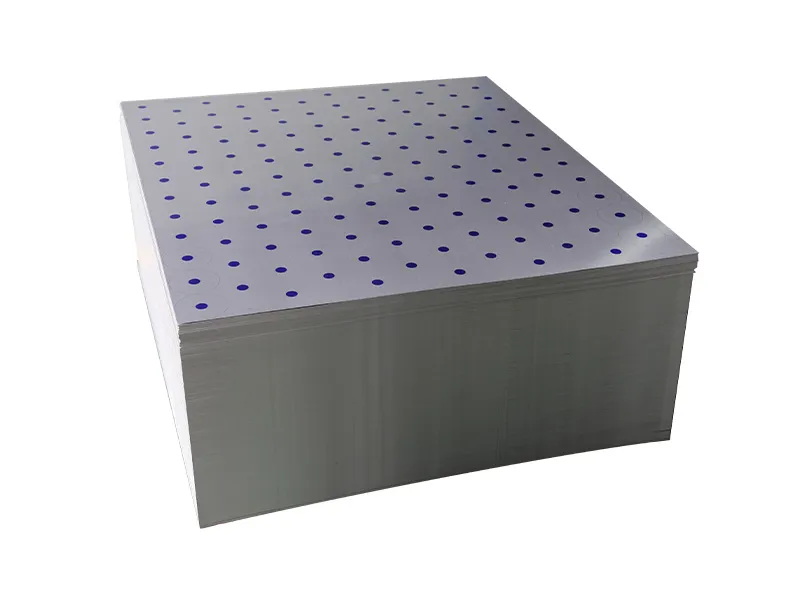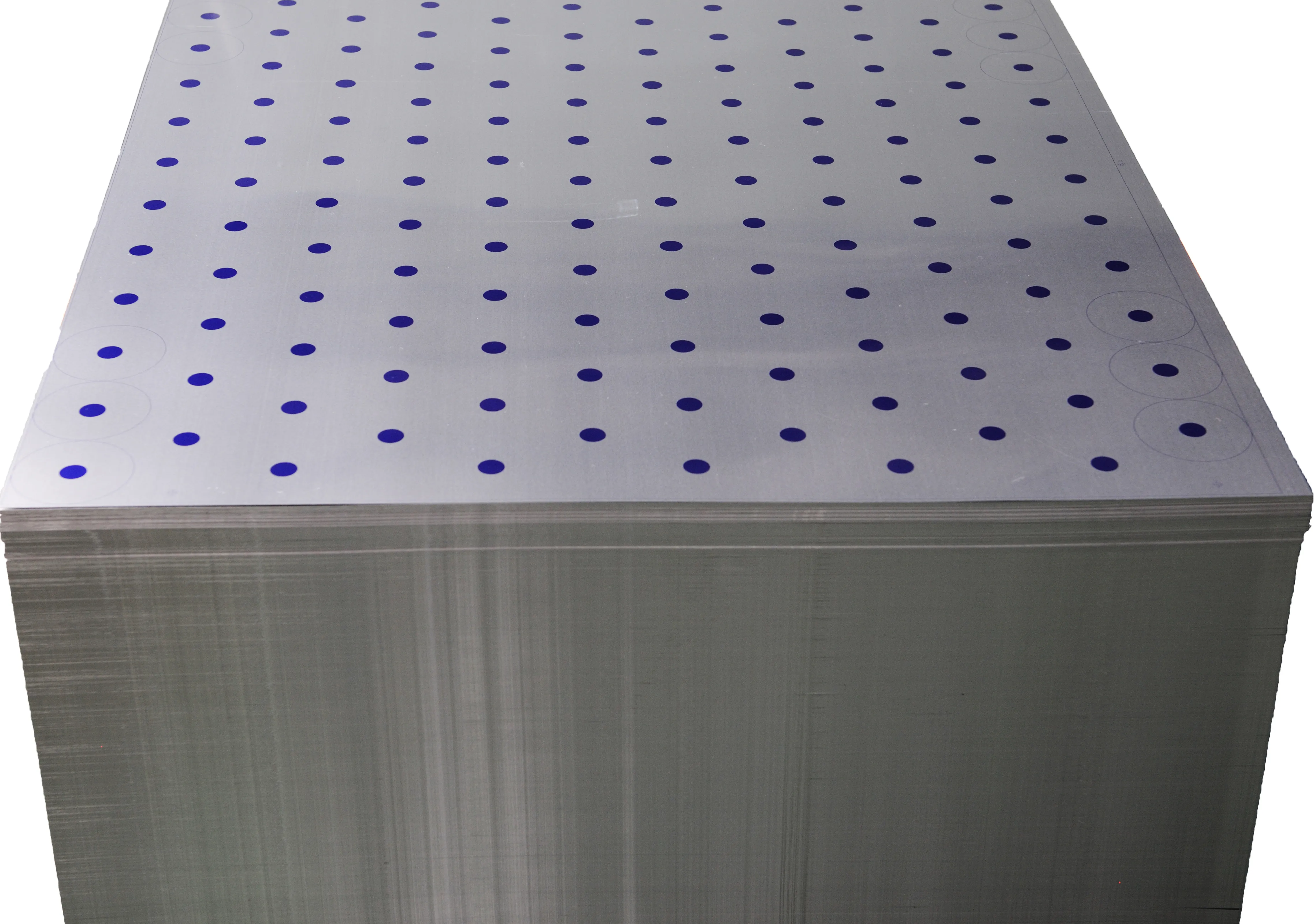2025-05-21 02:29:15
Aluminum sheets come in a wide range of thicknesses, catering to diverse applications. The way thickness is specified can vary, but typically it's in inches (imperial) or millimeters (metric).
Understanding Aluminum Thickness Terminology:
Foil: Extremely thin aluminum, typically less than 0.0079 inches (0.2 mm). Think kitchen foil.
Sheet: Generally defined as material between 0.0079 inches (0.2 mm) and 0.249 inches (6.3 mm). This is the most common form for many fabrication projects.
Plate: Material that is 0.250 inches (6.35 mm) or thicker. Used for more structural or heavy-duty applications.

It's common to see thicknesses specified in decimals of an inch or in millimeters. While there's a "gauge" system for sheet metal, it's less universally standardized for aluminum than for steel, and can be confusing. It's always best to specify the actual thickness in inches or mm.
Here are some common thicknesses you might encounter (this is not exhaustive):
|
Inches (Decimal) |
Inches (Fractional Approx.) |
Millimeters (mm) |
Typical Uses Examples |
|
0.016" |
~1/64" |
0.4 mm |
Very light applications, shims, decorative trim |
|
0.020" |
~1/50" |
0.5 mm |
Light signage, flashing, model making |
|
0.025" |
~1/40" |
0.63 mm |
Light enclosures, ductwork |
|
0.032" |
~1/32" |
0.8 mm |
Small electronic enclosures, DIY projects, some signage |
|
0.040" |
~3/64" |
1.0 mm |
General purpose, light-duty panels, brackets |
|
0.050" |
~1/20" |
1.27 mm |
Moderately stressed panels, small chassis |
|
0.063" |
~1/16" |
1.6 mm |
Common for robust enclosures, brackets, vehicle panels |
|
0.080" |
~5/64" |
2.0 mm |
Stiffer panels, light structural parts |
|
0.090" |
~3/32" |
2.3 mm |
More demanding enclosures, some structural elements |
|
0.100" |
~1/10" |
2.5 mm |
|
|
0.125" |
1/8" |
3.0 mm / 3.175mm |
Very common for structural brackets, chassis, panels |
|
0.1875" |
3/16" |
4.76 mm |
Stronger structural parts, base plates |
|
0.250" |
1/4" |
6.35 mm |
Becomes "plate"; heavy-duty structural applications |

Choosing the right thickness is crucial for your project's success. Consider these factors:
Structural Requirements / Load:
Strength & Rigidity: Will the sheet need to support weight or resist bending/flexing? Thicker sheets are stronger and more rigid. For larger, unsupported spans, thicker material is needed to prevent "oil canning" (flexing).
Impact Resistance: Thicker material will better resist dents and punctures.
Formability / Bendability:
Thinner sheets are easier to bend and form into complex shapes.
Thicker sheets require more force to bend and will have a larger minimum bend radius (you can't bend them as sharply without cracking).
Weight:
Aluminum is prized for its light weight. If minimizing weight is critical (e.g., aerospace, automotive, portable devices), choose the thinnest sheet that meets strength requirements.
Cost:
Thicker material means more aluminum, which generally means higher cost. Processing thicker material (cutting, bending) can also be more expensive.
Welding / Joining:
Thinner sheets (<1.5mm or ~0.060") can be more challenging to weld without burning through, requiring more skill and specialized equipment (like TIG welding with fine control).
Thicker sheets are generally easier to weld and can handle more heat.
For mechanical fasteners (rivets, screws), ensure the sheet is thick enough to provide adequate thread engagement or bearing surface.
Aesthetics / Appearance:
Sometimes a thicker edge or a more substantial feel is desired for visual or tactile reasons.
Surface finish can also play a role, though it's less directly tied to thickness than to the alloy and manufacturing process.
Application Specifics:
Enclosures: For small electronics, 0.032" to 0.080" (0.8mm to 2mm) might be suitable. Larger or more robust enclosures might need 0.090" to 0.125" (2.3mm to 3mm).
Signage: Can range from 0.025" for small indoor signs to 0.080" or thicker for large outdoor signs.
Vehicle Panels: Often in the 0.050" to 0.090" (1.2mm to 2.3mm) range, balancing strength and weight.
Brackets & Mounts: Will depend entirely on the load. 0.063" (1.6mm) might be fine for light-duty, while 0.125" (3mm) or thicker is common for more substantial loads.
Heat Sinks: Thickness influences thermal mass and dissipation area.
Thermal Properties:
Thicker material will have more thermal mass, which can be beneficial for heat sinking applications.
General Guidelines:
Start thinner if unsure and prototyping: It's easier to go thicker later if needed.
Consider the span: A large, unsupported sheet will require more thickness to avoid flexing than a small, well-supported one.
Don't forget alloy and temper: The specific aluminum alloy (e.g., 5052, 6061) and its temper (e.g., H32, T6) dramatically affect strength and formability, often more so than small variations in thickness. For instance, 6061-T6 is much stronger than 3003-H14 at the same thickness.
Consult suppliers or engineers: For critical applications, get advice from material suppliers or engineers who can perform calculations.
By carefully considering these factors, you can select the aluminum sheet thickness that best suits your project's needs and budget.